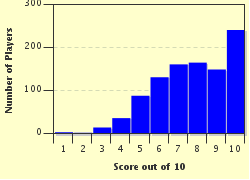Quiz Answer Key and Fun Facts
1. In American folk tales, what giant lumberjack was accompanied by a blue ox named Babe?
2. Scottish folklore includes the figure of a particular 'monster' dwelling in a lake in the Highlands. In what lake does this creature, derived from tales of Scottish Kelpies, reside?
3. In the Alps, the Krampus is a creature known to accompany which famous saint?
4. Perhaps the most famous figures of Scandinavian folklore are which of the following fantastical creatures?
5. The Tooth Fairy is a figure from folk tales known for taking teeth. What is commonly left behind?
6. The loup-garou is a figure better known to English-speakers as which of these?
7. In Japan, the Kappa is a creature from folklore residing in which natural setting?
8. Is it swamp gases? If not, it might be a ghostly figure leading you astray with its lantern. What is this spectre's name?
9. In what region of the world is a Red Cap?
10. Australian Aboriginals first spoke of this creature centuries ago. The form of what billabong-residing folk figure is still contested today?
Source: Author
kyleisalive
This quiz was reviewed by FunTrivia editor
looney_tunes before going online.
Any errors found in FunTrivia content are routinely corrected through our feedback system.

